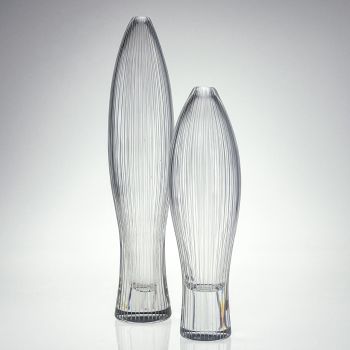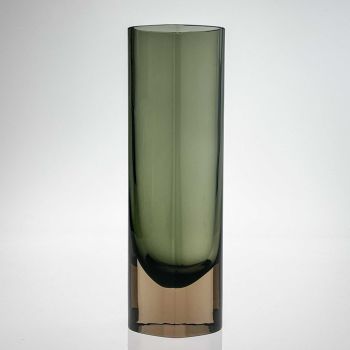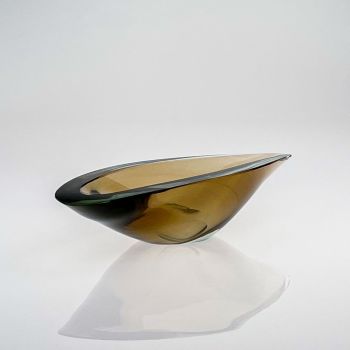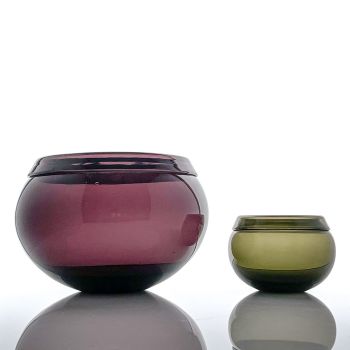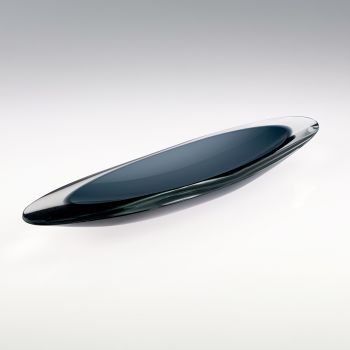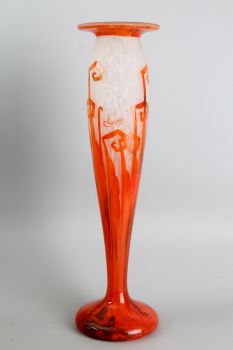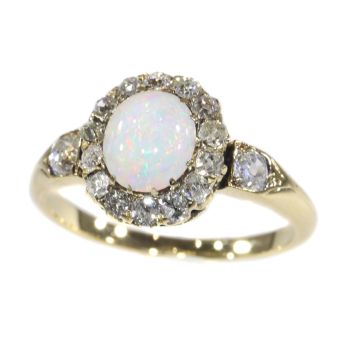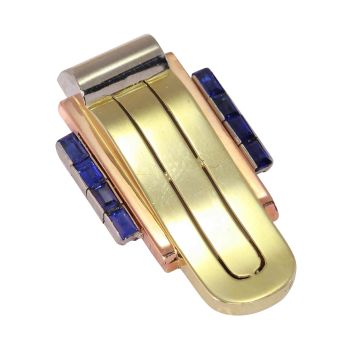Crystal Art-Object with sodium bubbles, model 3242 - Iittala, Finland circa 1948 1948 - 1949
Tapio Wirkkala
KristallEdelstein
14 cm, ø 8 cm
ConditionVery good
Derzeit nicht über Gallerease verfügbar
- Über KunstwerkMold blown, crystal Art-object with sodium bubbles, model 3242. Designed by Tapio Wirkkala in 1948. This model was only produced for two years, namely 1948 or 1949 by the craftsmen at the Iittala glassworks in Finland.
The glassmass was blown in a special mold after which it was formed in the final shape while still hot. The bubbles in the glass were created by adding sodium into the glassmass. These particals would chemically react and form bubbles.
Execution Collapse
Iittala, Finland between 1948-1949
Marked
Tapio Wirkkala - Iittala in diamondpen
Condition
Good overall condition, minor wear consistent of age and use. No cracks or chips.
Literature
Marianne Aav, TAPIO WIRKKALA eye, hand and thought: p. 395
Dimensions
H. 14.1 cm
Diam. 8.57 cm
Weight 910 grams
About Tapio Wirkkala
Tapio Wirkkala (1915 Hanko, Finland - 1985 Helsinki, Finland) A giant of Finnish design, Wirkkala was an artist of great diversity for whom no material was alien and who left no area of design unexplored.
A glass design competition held by the Iittala glassworks in 1946 was the event that set his career in motion; the first prize went jointly to Wirkkala and Kaj Franck.
With an oeuvre that ranges from exceptionally beautiful pieces of glass art to industrial design in the form of beer bottles and banknotes, Wirkkala also designed jewellery, sculptures, and furniture.
The recipient of many awards, honorary titles, and a doctorate, Wirkkala won three Grand Prix medals at the Milan Triennale in 1954 and an additional Grand Prix medal and gold medal at the Milan Triennale in 1960. - Über Künstler
Tapio Wirkkala (1915-1985) war ein vielseitig begabtes Designgenie, das weithin als eine führende Persönlichkeit der modernen finnischen Industriekunst angesehen wird. Das breitgefächerte Portfolio von Wirkkala reicht von Glas-, Möbel- und Produktdesign über Skulptur, Stadtplanung, Kunst, Grafik bis hin zur Erstellung von Banknoten für die finnische Schatzkammer.
Während seiner unglaublich produktiven Karriere erhielt Wirkkala zahlreiche Auszeichnungen, darunter drei Goldmedaillen bei der Mailänder Triennale, den Lunning-Preis, die Pro Finlandia-Medaille und die Prinz-Eugen-Medaille.
1946 gewann Wirkkala seinen ersten Designpreis bei einem von Iittala gesponserten Wettbewerb, der eine lebenslange Beziehung mit nachhaltigen Auswirkungen auf seine Karriere und das Unternehmen markieren sollte. Als künstlerischer Leiter von Iittala trug Wirkkalas einzigartige künstlerische Vision dazu bei, den weltweiten Ruf des Unternehmens zu etablieren.
Während seiner legendären Karriere schuf der einzigartig talentierte Künstler mehr als vierhundert Glasobjekte für Iittala, von denen viele, wie die Serien Ultima Thule und Tapio, bis heute beliebt sind.
Artwork details
Related artworks
- 1 - 4 / 9
- 1 - 4 / 24
Frères Daum
Daum Nancy – “Paysage Soleil Couchant” vase with two applied handles1900 - 1910
Prix sur demandeAntiques Emporium
Gabriel Argy-Rousseau
Gabriël Argy-Rousseau – Crabes et Algues vase – 19201920 - 1929
Prix sur demandeAntiques Emporium
1 - 4 / 24- 1 - 4 / 24















